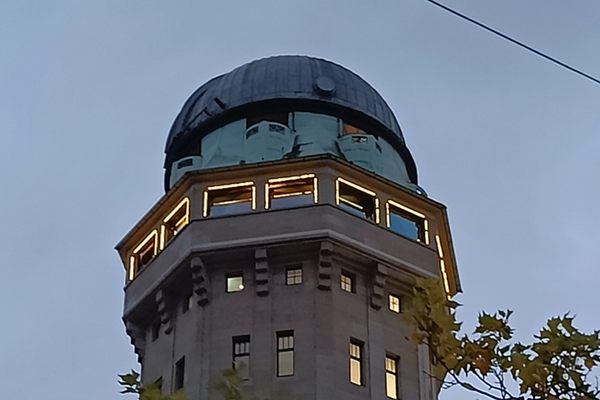South African Astronomical Observatory
This historic observatory was established to keep shipwrecks from littering the Cape of Good Hope.
In South Africa, the Cape of Good Hope is the official home of the South African Astronomical Observatory on top, and the unofficial home of more than 3,500 shipwrecks down at the bottom.
Until the work of the South African Astronomical Observatory (the SAAO) began in 1820, the treacherous seas around the Cape of Good Hope saw more than 500 years of ships battering and crashing through the South Atlantic, with little to no usable stellar navigation established. Without the positions of the Southern stars accurately mapped, ships were often on their own, in unfamiliar waters and under unfamiliar skies.
In 1820, a young Fearon Fallows was sent by the Royal Society of Astronomers to the Cape of Good Hope to get a handle on those southern skies, and maybe help a few ships’ captains avoid disaster. Fallows, a brilliant astronomer and mathematician, was from the same small town of Cockermouth in the north of England that produced the brilliant poet William Wordsworth and less brilliant (but maybe more colorful) Fletcher Christian of Mutiny on the Bounty fame.
Despite his small-town beginnings, Fallows was talented enough to be dispatched to the other side of the world to accomplish a nearly impossible task – to get an observatory up and running while plagued by sand and dust storms, snakes, a lack of qualified stone masons (major stone work was required to stabilize early astronomical equipment), and the dreaded tablecloth clouds that could almost instantly block out the skies. But Fallows persevered, and the original structure for the observatory was completed in 1829.
Sadly, the struggle may have taken the ultimate toll on Fallows, who passed away only three years later – dead from recurring scarlet fever, and buried on the grounds of his now-functioning observatory.
Fallows’ plotting of the southern skies finally appeared in star catalogs in 1851, and his successor’s catalogue of Southern stars has held as a basis of refined sidereal astronomy (a field that relates to constellations and their daily movements) in the southern hemisphere. The observatory’s measurements were so precise for their time – this is still only 1833 – that they accurately measured the distance of Alpha Centauri (our next closest star, almost four and a half lightyears away) to within 1/5,000th of a degree. As the SAAO notes, that’s like measuring the diameter of a penny from two and a half miles away.
The observatory eventually set up a campus of major telescopes in Sutherland, about four hours away from the main location in Observatory, in order to take advantage of its dark skies, with very little light pollution and mostly unfettered by clouds. There they’ve erected the largest telescope in the southern hemisphere, the aptly named Southern African Large Telescope, or SALT, which houses 91, three-foot mirrors to create a light-gathering surface of 835 square feet. That’s just one of their telescopes, but that’s a lot of light.
Know Before You Go
Cape Town main campus is in the suburb of Observatory off Liesbeek Pkwy. The Sutherland telescope facilities
The Atlas Obscura Podcast is Back!































Follow us on Twitter to get the latest on the world's hidden wonders.
Like us on Facebook to get the latest on the world's hidden wonders.
Follow us on Twitter Like us on Facebook